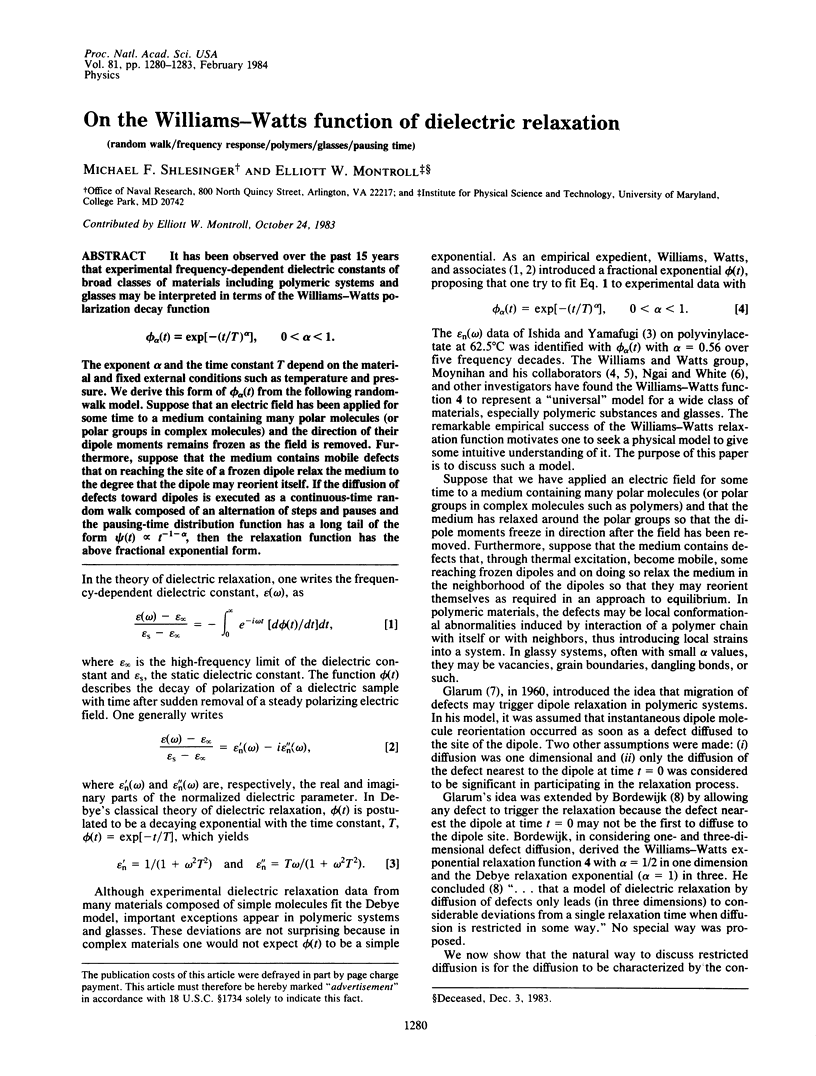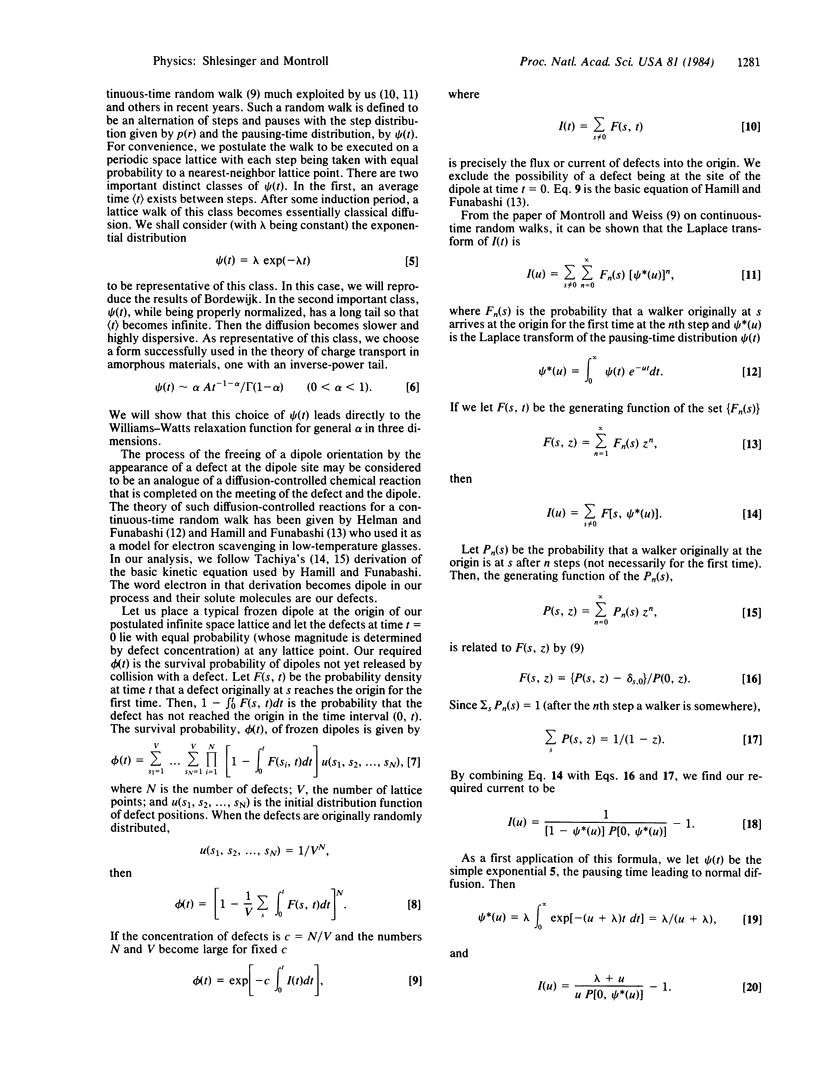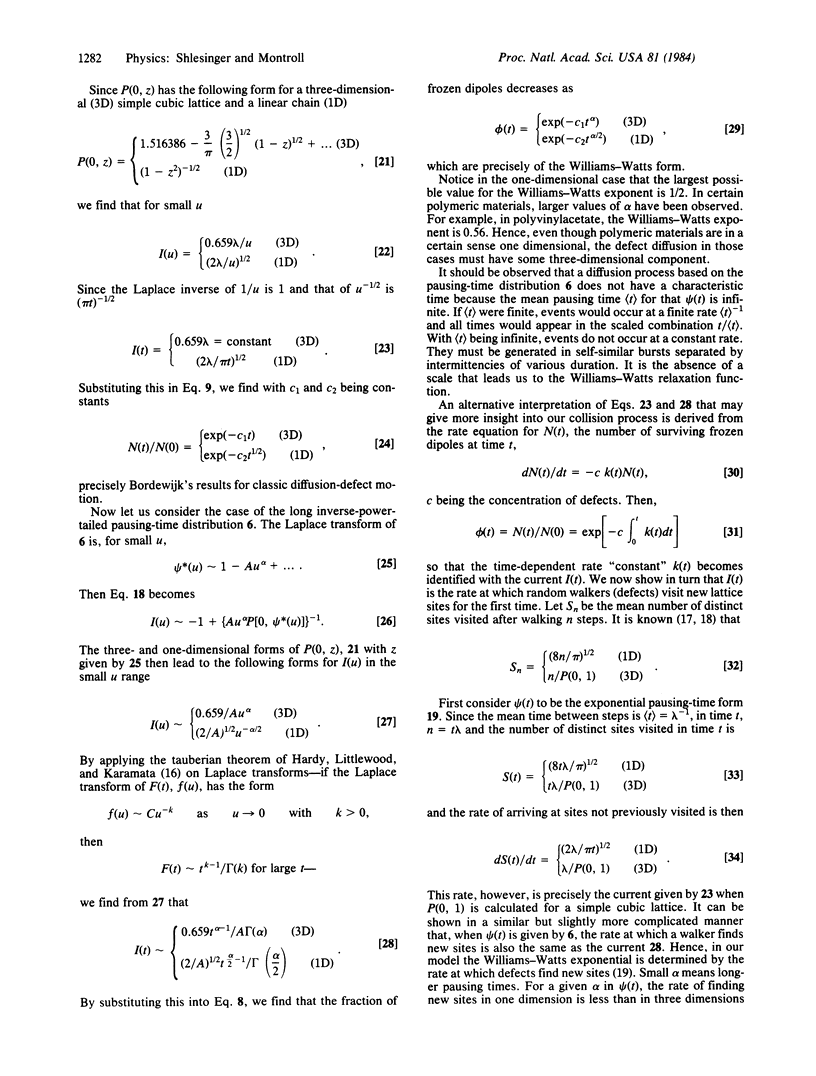Abstract
It has been observed over the past 15 years that experimental frequency-dependent dielectric constants of broad classes of materials including polymeric systems and glasses may be interpreted in terms of the Williams-Watts polarization decay function [Formula: see text] The exponent α and the time constant T depend on the material and fixed external conditions such as temperature and pressure. We derive this form of ϕα(t) from the following random-walk model. Suppose that an electric field has been applied for some time to a medium containing many polar molecules (or polar groups in complex molecules) and the direction of their dipole moments remains frozen as the field is removed. Furthermore, suppose that the medium contains mobile defects that on reaching the site of a frozen dipole relax the medium to the degree that the dipole may reorient itself. If the diffusion of defects toward dipoles is executed as a continuous-time random walk composed of an alternation of steps and pauses and the pausing-time distribution function has a long tail of the form ψ(t) ∞ t-1-α, then the relaxation function has the above fractional exponential form.
Keywords: random walk, frequency response, polymers, glasses, pausing time
Full text
PDF





